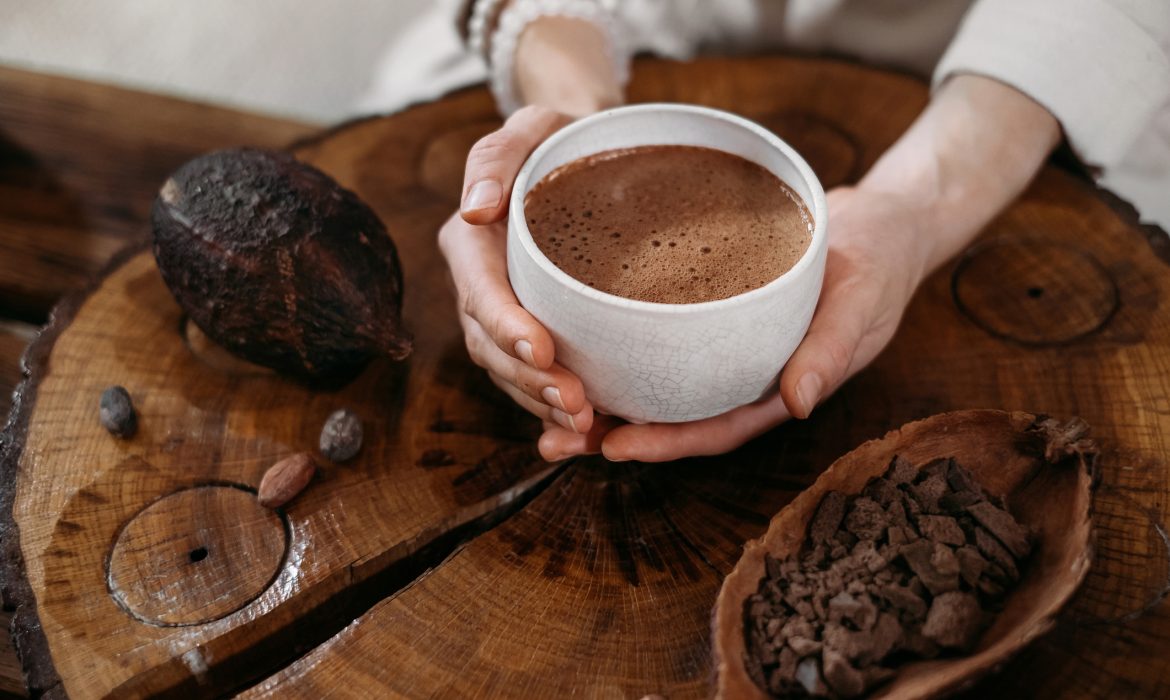Legend has it that one day the god Quetzalcoatl stole the cacao tree from the paradise where the gods lived, descended to earth, planted it, and asked Tlaloc to water it so that it would grow. Once the tree had grown, he went to visit Xochiquetzal, the goddess of love and beauty, to adorn the tree with beautiful flowers—flowers that over time gave birth to the fruit of cacao. Thanks to this incredible gift, humans became wise, scholars, artists, and artisans.
With this in mind, let’s begin our chronology, starting in Mexico, where chocolate is designated as one of the most famous beverages worldwide, from the Nahuatl word “xocoatl” (bitter or acidic water), derived from “xoxoc” (bitter thing) and “atl” (water).
The gift of the gods: Origins in Mesoamerica
Over 3,000 years ago, cacao was discovered and revered as a divine gift in the ancient Mesoamerican civilizations. The Olmecs, Mayans, and Aztecs believed that cacao was a gift from the gods, and used it in sacred rituals and ceremonies. In the form of a thick and bitter beverage, sweetened with honey and spices, cacao became an elixir reserved for the nobility and spiritual leaders.
The arrival of Spanish conquistadors in the 16th century marked a pivotal moment in the history of chocolate. Hernán Cortés, fascinated by the cacao beverage witnessed in Aztec courts, introduced the novelty to Spain. The original recipe was adjusted with sugar, vanilla, and cinnamon, giving rise to a more palatable drink for European tastes.
Chocolate quickly became a symbol of status and elegance in European courts. From Spain, the trend spread to France and Italy, where royalty enthusiastically embraced the beverage. Cacao, once reserved for the gods, became the perfect gift for royal weddings and special events.
The leap to global trade: Chocolate for everyone
As global trade expanded, chocolate ceased to be an exclusive luxury for the aristocracy. The Industrial Revolution brought about mass production, making this delicacy accessible to the masses. The first chocolate bars emerged, and specialized stores began delighting common people with various flavors and textures.
Today, chocolate has become a universal pleasure. From artisanal chocolate bars to exquisite bonbons, the chocolate market has evolved remarkably. Chocolate is not only a delightful treat but also a versatile ingredient that has conquered the realms of baking, mixology, and haute cuisine.
Throughout the centuries, chocolate has transitioned from being a sacred beverage in Mesoamerican civilizations to a daily pleasure for millions worldwide. Its history is a fascinating blend of tradition, innovation, and a love for all things sweet. So, the next time you savor a piece of chocolate, remember that you’re enjoying a legacy that has withstood the test of time and continues to sweeten our lives. Enjoy the delightful journey of chocolate!







